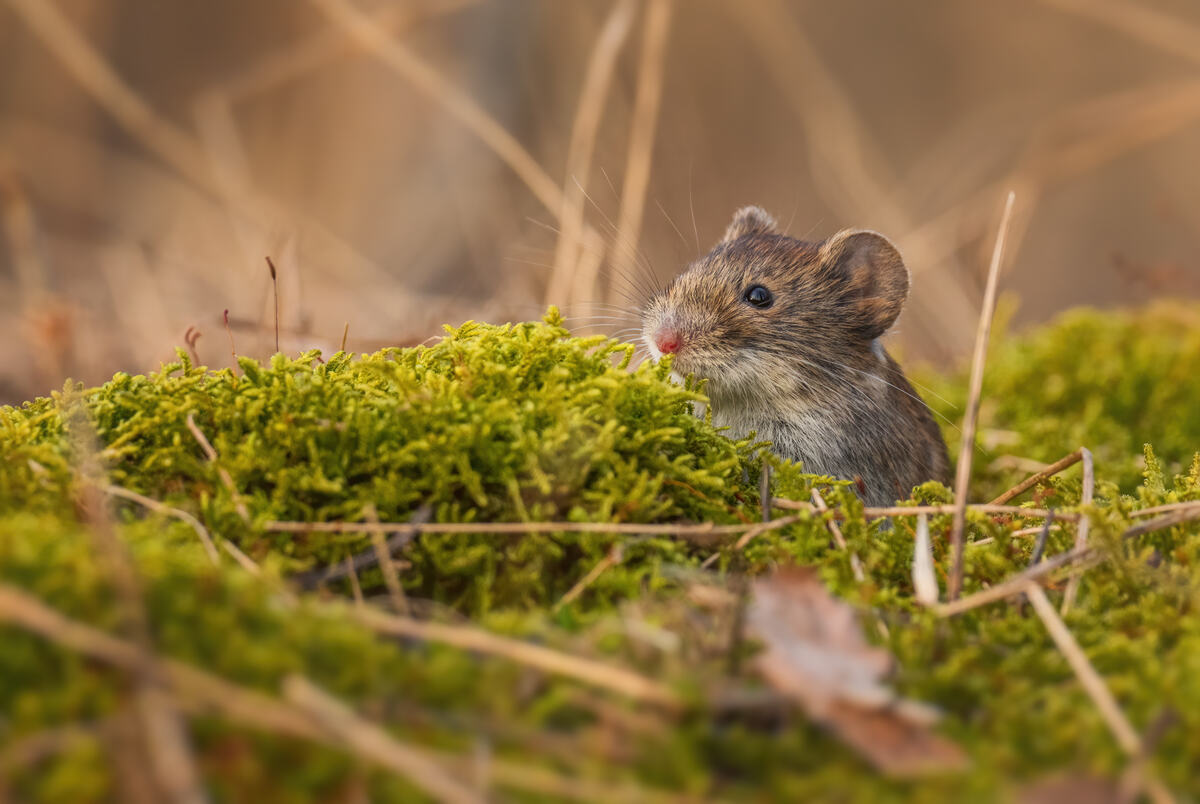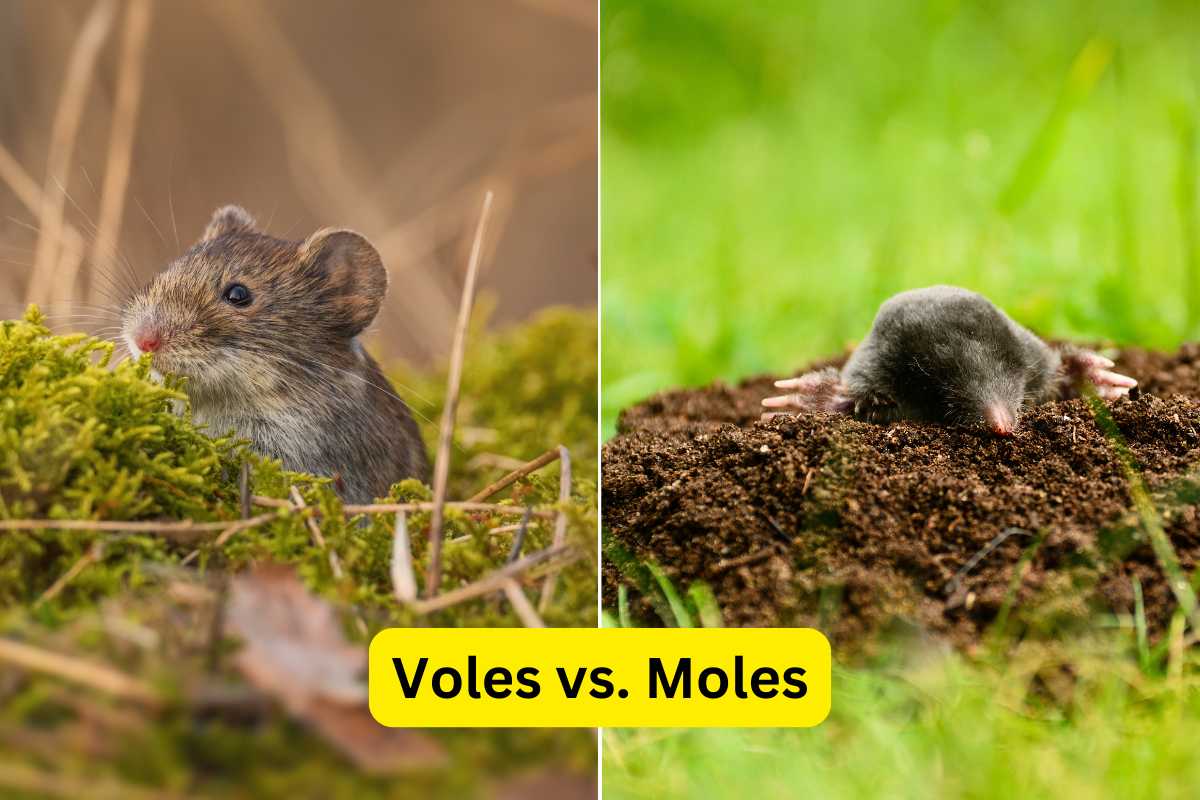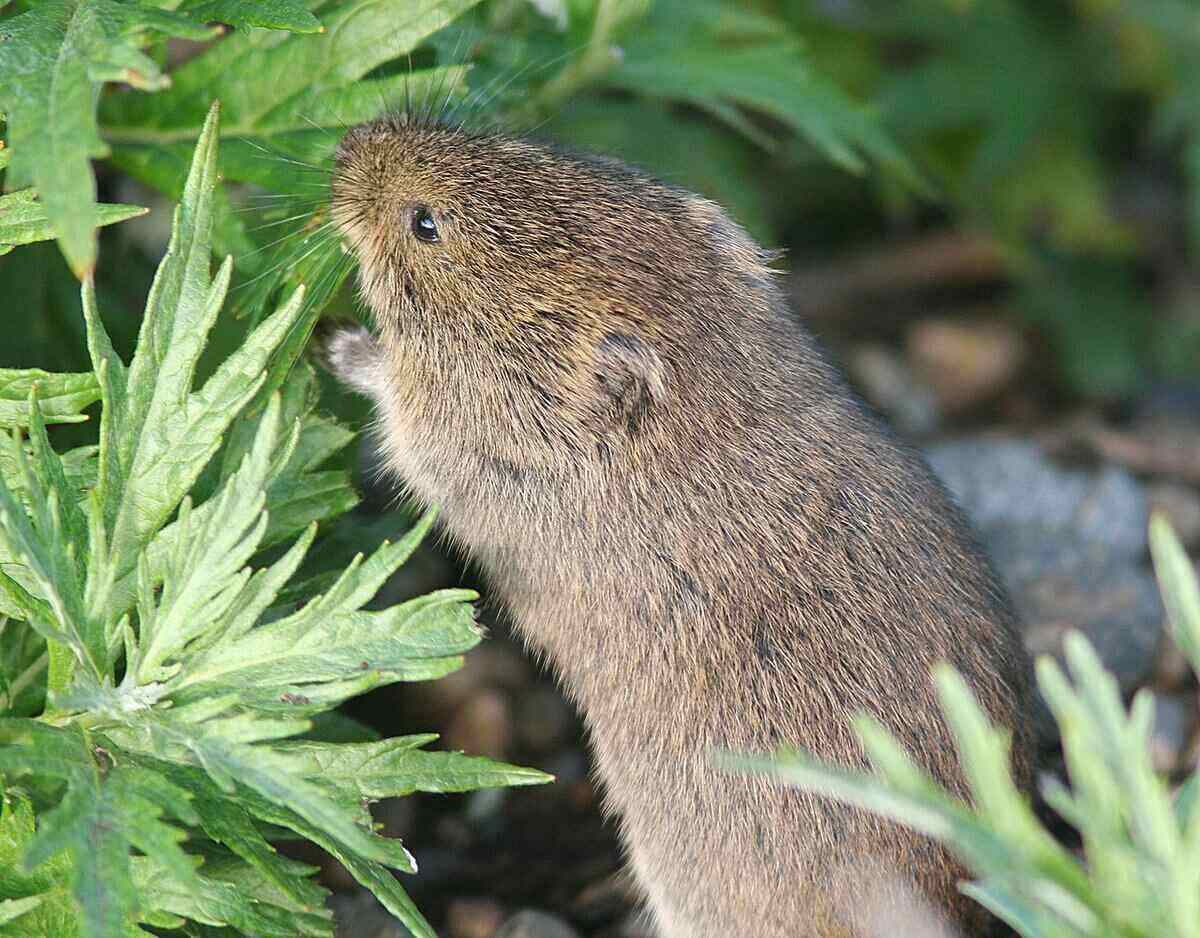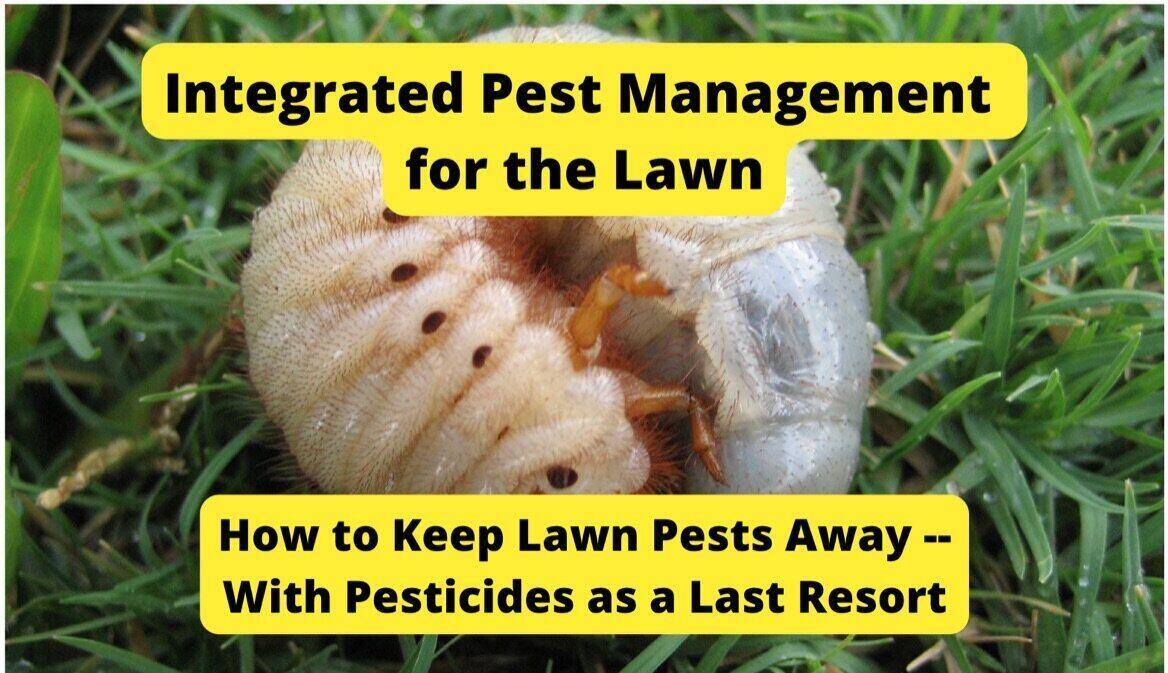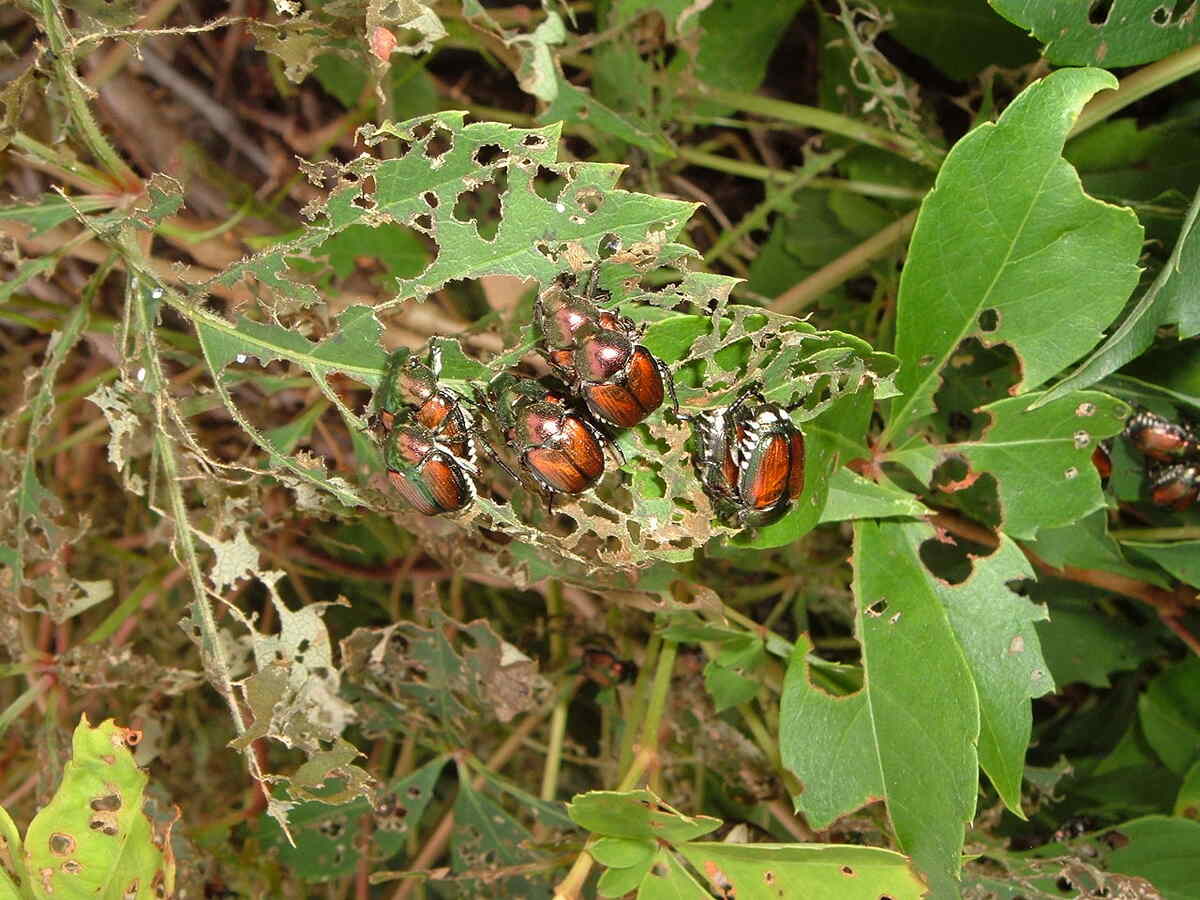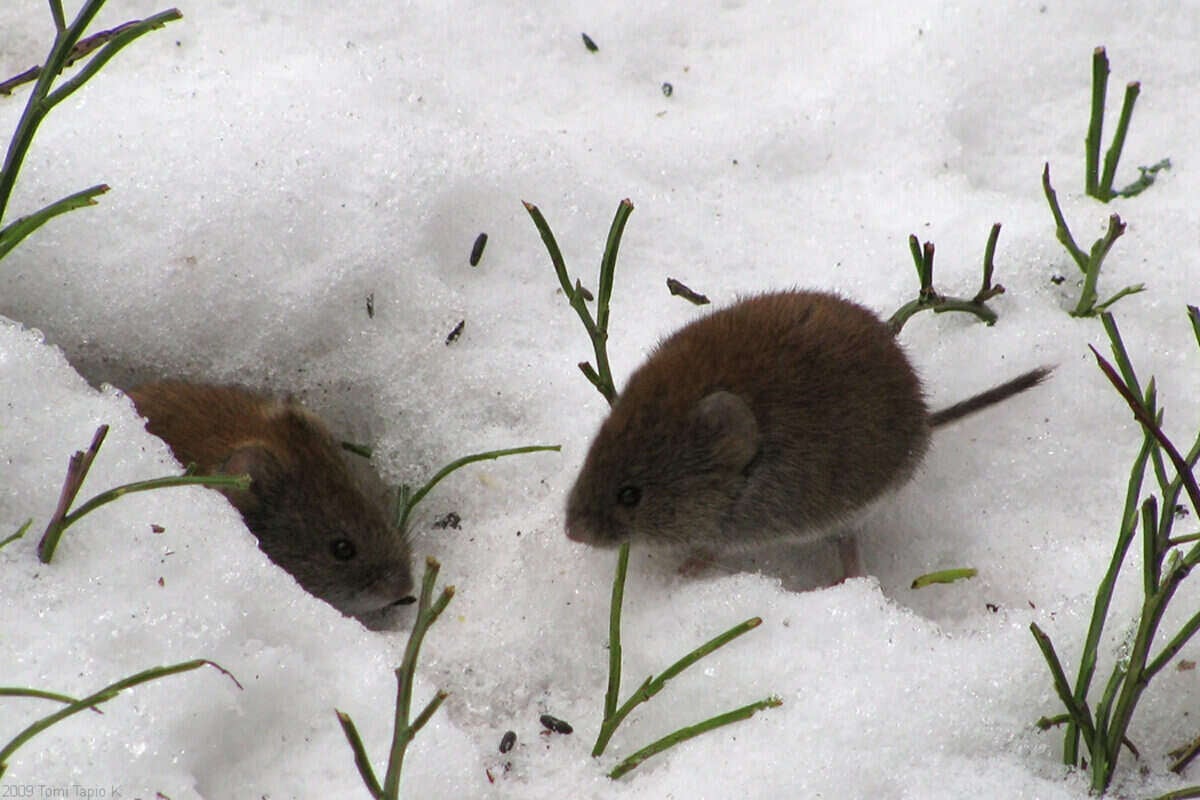
With voles ruts looking as nasty as they do in your lawn, it’s a natural reaction to rush to fix it, but it might be the wrong move. A key point in repairing vole damage is choosing the right moment to intervene.
Unlike other types of winter lawn damage, vole injury looks worse than it is. Most of the time, removing the dead grass, filling the trails with soil, and fertilizing is enough to regrow the damaged turf. Sometimes, you’ll need to seed new grass.
How to Recognize Voles and Their Damage
What are Voles?
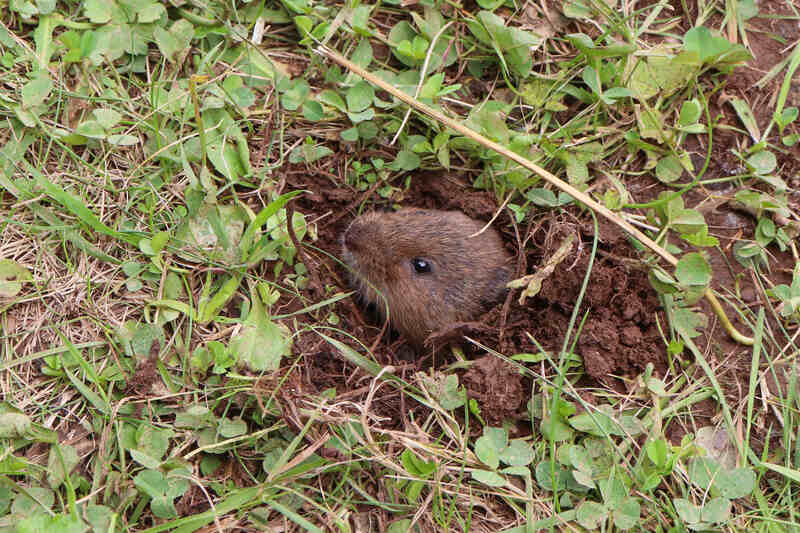
First, let’s meet our culprit: the voles. These rodents feed on various plants but prefer grasses and forbs. In the winter, they often enter home lawns and landscapes, taking refuge from nearby crop fields.
They look like field mice but with a smaller tail. Voles’ compact bodies are about 4 to 7 inches long, covered in brown to gray fur, with tiny feet and round heads. They have beady, black eyes and round ears partially covered in fur.
Small and fast, voles are rarely seen as more than a brown blur in the grass. Their damage, however, will stare you right in the face and make your heart sink.
What Vole Damage Looks Like
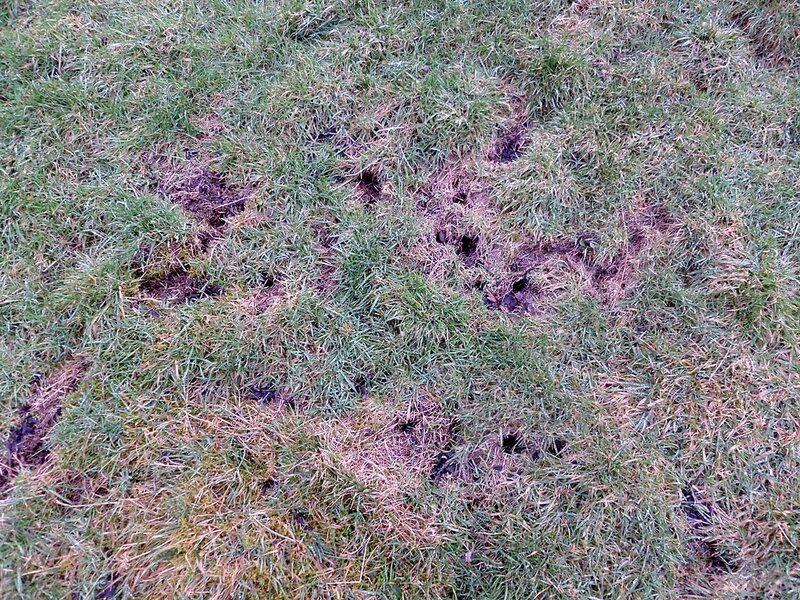
Voles damage lawns by digging underground burrows, munching on grass stems, scalping the turf, and trampling the grass when scurrying back and forth in their runaways. The vole damage homeowners have to repair looks like this:
- Snaking trails cut through the turf, 1 to 2 inches wide, with matted-down grass or bare soil
- Round, golf ball-size holes in the ground
- Dead, straw-colored grass along the vole tracks
- Large areas with bare soil
Note: If you see volcano-like mounds of dirt or raised ridges, you might have moles, not voles. The two are often confused.
Voles do the worst damage during winter when the snow cover protects them from predators like hawks and owls. The damage becomes visible after snowmelt in late winter and early spring (February, March, and even early April up north).
How to Repair Vole Damage in Lawns
Step 1: Get Rid of the Voles
To prevent further vole damage, start by removing these critters from your property. The best ways to remove voles from your yard include:
- Trapping. Use kill traps or install live traps and relocate the voles. Seeds and peanut butter work great as bait.
- Spreading a vole repellant. Products with castor oil and capsaicin (the chemical that gives chili peppers their fire) have good results.
- Using poison baits. Since voles are related to mice, most mouse baits work fine. Place them in bait stations to prevent pets and other wildlife from ingesting them.
- Hiring a professional to take care of this not-so-pleasant task.
Place bait stations and traps in vole runways with signs of active use (vole poop – tiny brown or green rice-like pellets – and freshly cut grass).
Step 2: Rake Dead Grass and Vole Excrement
Many homeowners notice the damage as the snow melts and wonder whether to start repairs immediately or wait. The golden rule is to avoid walking and working on your turf while the grass and soil are wet or frozen to prevent harm to the turf and compacting the soil.
Give it a few days until:
- The soil is well-drained (you can step on the lawn without leaving footprints on the dirt).
- The grass is completely thawed. To test it, get closer and run your open hand through the grass. If it feels wet, the lawn is not ready for repairs.
In the meantime, use a shovel to disperse the remaining snow mounds. This reduces vole hideouts and the risk of snow mold, a turf fungal disease that thrives under snow cover.
Once the lawn is dry enough, start fixing the vole damage by first cleaning the area:
- Rake gently but thoroughly to remove the dead grass and vole excrement.
- Use a leaf rake instead of a garden rake. It has flexible tines and prevents you from damaging the grass if you press it too hard on the soil.
Should you dethatch and aerate? If your lawn is actively growing when you start the repairs, then yes, dethatch and aerate if necessary. If the grass is dormant, stick with a light raking.
Step 3: Fill in Vole Burrow Holes and Runways
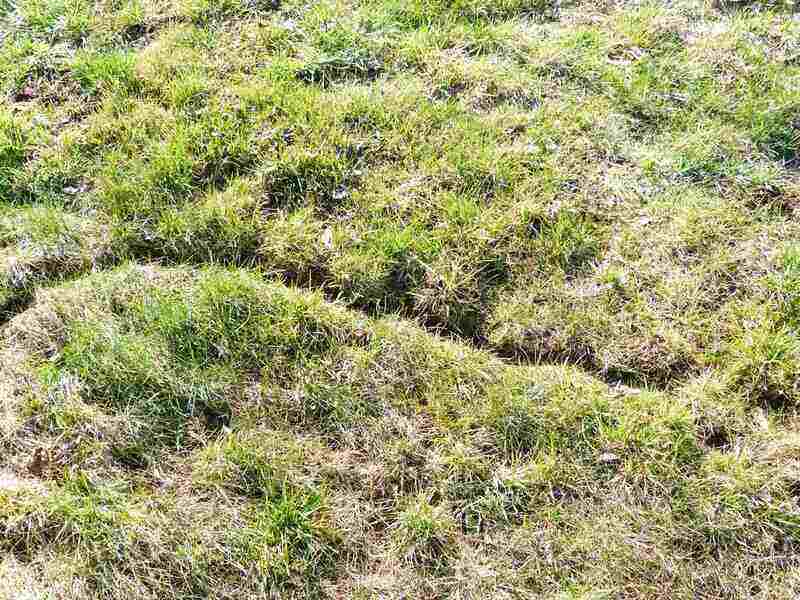
Vole holes are partially hidden by vegetation but still look bad on a neat lawn. Filling any visible holes with topsoil might discourage voles from reusing the tunnels. I would use a trowel to fill these tiny holes — it’s handy when working with small amounts of soil.
Vole runways are slightly below the soil level because of vole traffic compacting the top layer. To level the lawn, fill these ruts with topsoil:
- Roughly spread the topsoil across the damaged area
- Use the back of a rake to move it around and level it
According to Jason Lanier, extension specialist at the University of Massachusetts Amherst, voles feed only on turfgrass shoots and typically don’t damage the crown and root system.
“Very often, grass plants will re-grow in the damaged areas as the weather warms,” Lanier said.
Water the lawn only if the soil is dry in the top 1-2 inches, and give it a couple of weeks to see how the grass recovers. You might not need to reseed.
Step 4: Plant New Grass Where Necessary
Once the weather warms up and the grass starts to green up, walk around the yard and see which repaired areas didn’t recover well.
To reseed the bare patches or overseed thinned spots, buy a turf mix that fits the one you already have to maintain the uniform, velvet-like look. Plant the seeds when the soil temperatures are high enough to support germination:
- Between 50 and 65 degrees Fahrenheit for cool-season grasses
- Above 70 degrees Fahrenheit for warm-season grasses
Note: If you need to seed grass, skip the pre-emergent application in the spring lawn care routine. Otherwise, the seeds won’t germinate.
Here’s how to plant the grass seed in patches damaged by voles:
- Mow the lawn shorter – set the blades at the short end of the recommended mowing height range for your turf type.
- Prepare the area for seeding: pull out the weeds (if any), rake to remove dead grass, and loosen soil – this ensures good seed-to-soil contact.
- Spread the grass seed.
- Apply a starter fertilizer following the indications on the package.
- Water daily until seeds germinate (about two weeks). Ensure 3 to 4 inches of water per week or ⅛ to ¼ inches per day until the new grass sprouts.
Note: Vole damage is not the only injury you might see on your lawn at the end of winter. In the spring, you might also need to seed dead patches caused by crown hydration, winter desiccation, snow mold, and salt used in de-icers.
How to Repair Vole Damage on Shrubs and Trees

Voles gnaw on shrubs and tree bark and dig underground to feed on their roots, exposing them to diseases. To repair the damage:
- Prune the dry stems.
- Cut the chewed stems and branches above the last healthy segment still covered in bark.
- Fill in the holes under the trees and shrubs with dirt to cover the roots.
- Water and fertilize to support regrowth.
What do you do if the main stems are damaged? Michigan State University experts recommend waiting a few weeks to see if the tree or shrub recovers. If they are too severely damaged, the plants will continue to wilt and dry out, and you’ll need to replace them.
Related articles:
- “When to Prune Flowering Shrubs (and How to Do It)”
- “When is the Best Time to Trim, Prune Trees?”
- “How to Plant a Tree”
Some Repairs Require No Work
Repairing vole damage can be even easier. LawnStarter pros can fix all the damaged spots across the lawn, and they’re only one click away. Get your free quote right now and prepare for a perfect summer lawn!
They can also take all the daunting lawn care tasks off your hands, from dethatching, aerating, and seeding to perfect mowing and keeping the pests away.
Sources
- Lanier, J.D. (2011). Vole Damage to Lawns. University of Massachusetts Amherst. https://ag.umass.edu/turf/fact-sheets/vole-damage-to-lawns
- Menken, J. (2024). How to manage vole damage on lawns, trees and shrubs. University of Minnesota Extension. https://extension.umn.edu/planting-and-growing-guides/vole-damage
- Parkhurst, J. (2024, August 1). Managing Human-Wildlife Interactions: Woodland (Microtus pinetorum) and Meadow (Microtus pennsylvaticus) Voles. Virginia State University Cooperative Extension. https://www.pubs.ext.vt.edu/CNRE/cnre-181/cnre-181.html
- Michigan State University (2015). Animal damage– meadow voles and rabbits– and Abiotic injury. https://www.canr.msu.edu/resources/animal_damage_meadow_voles_and_rabbits_and_abiotic_injury
Main Image Credit: Tomi Tapio / Flickr / CC BY 2.0
